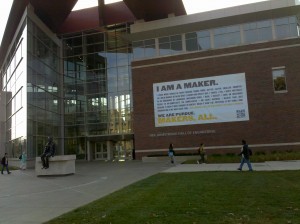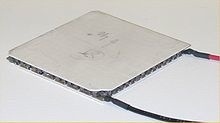George at nbitwonder caught this outside the Armstrong Hall of Engineering Purdue while walking to class. The signs read:
I think work should be about making things work. Better. Faster. Smaller. Smarter. So I build bridges between what’s known and what’s not. I tinker. I toil. I write poetically in an abundance of languages (including code). I hack. I dissect. I have an insatiable desire to un-complicate the complicated. I am easily inspired. I believe that just because it hasn’t been thought of doesn’t mean it won’t be. Potential is my thrill ride. Imagination is my most-used tool. I am a maker, and I am what moves the world forward.
The QR code at the bottom right of the poster decodes to: http://www.purdue.edu/makers
Always good to see I picked the right school for my EE degree!




